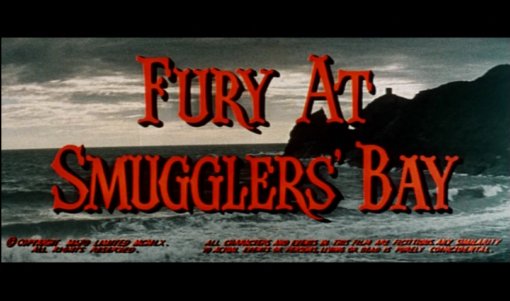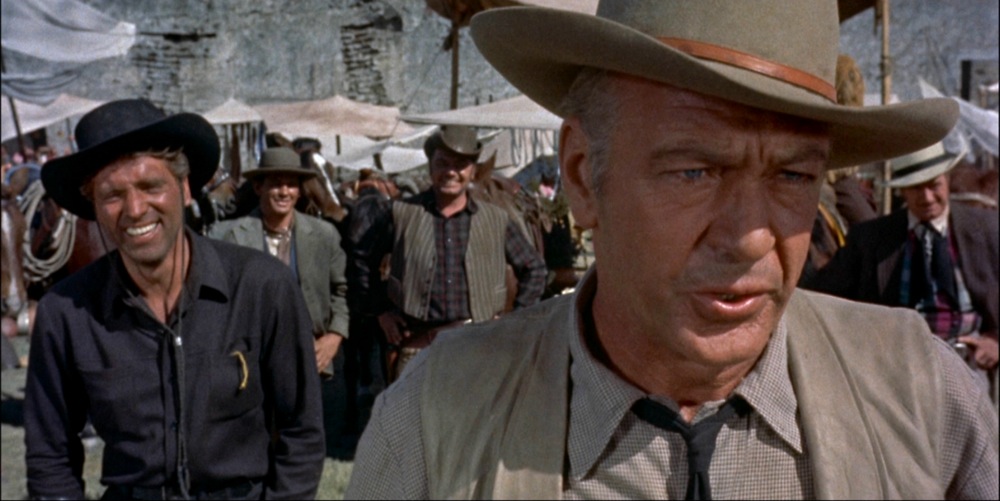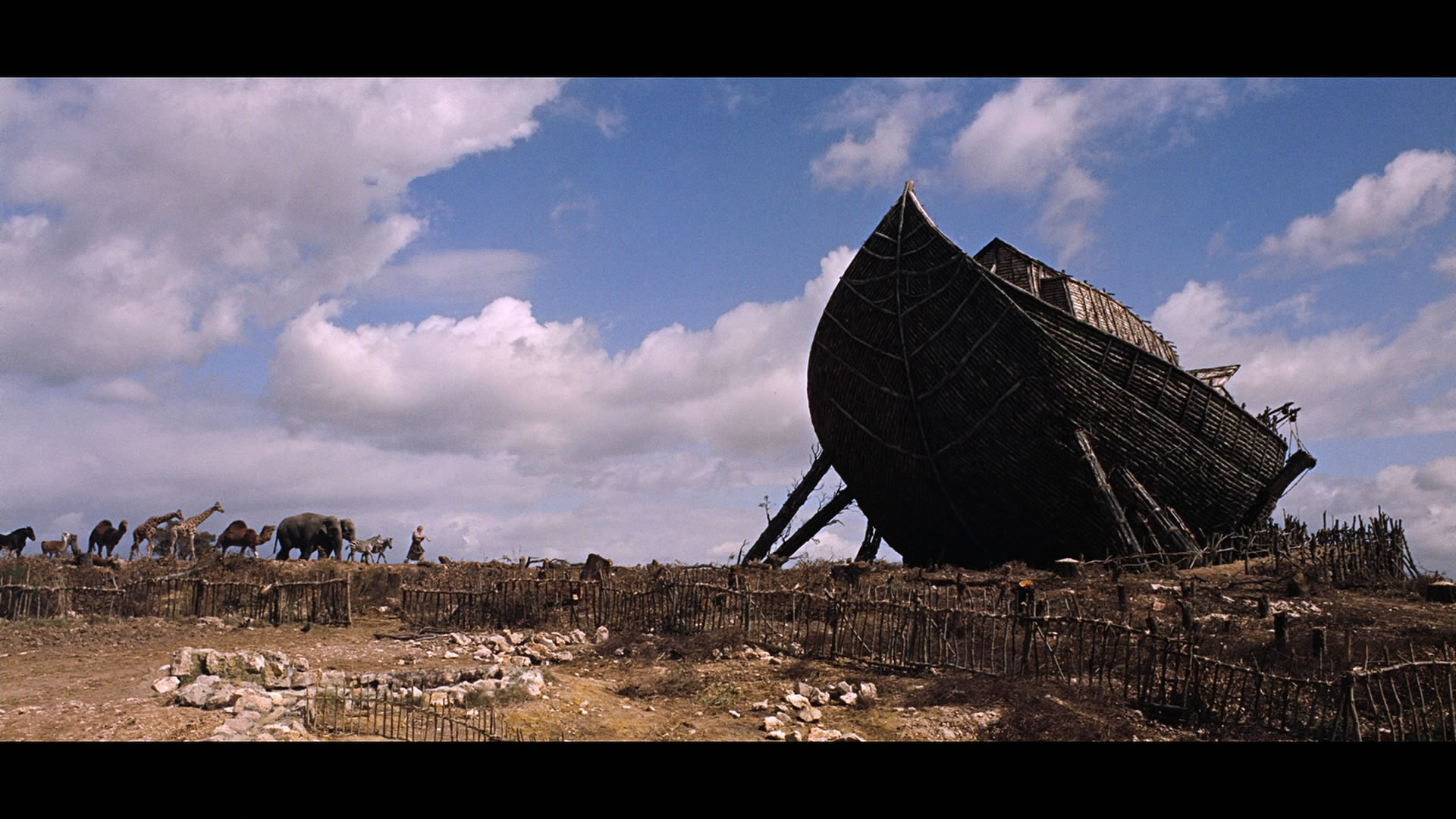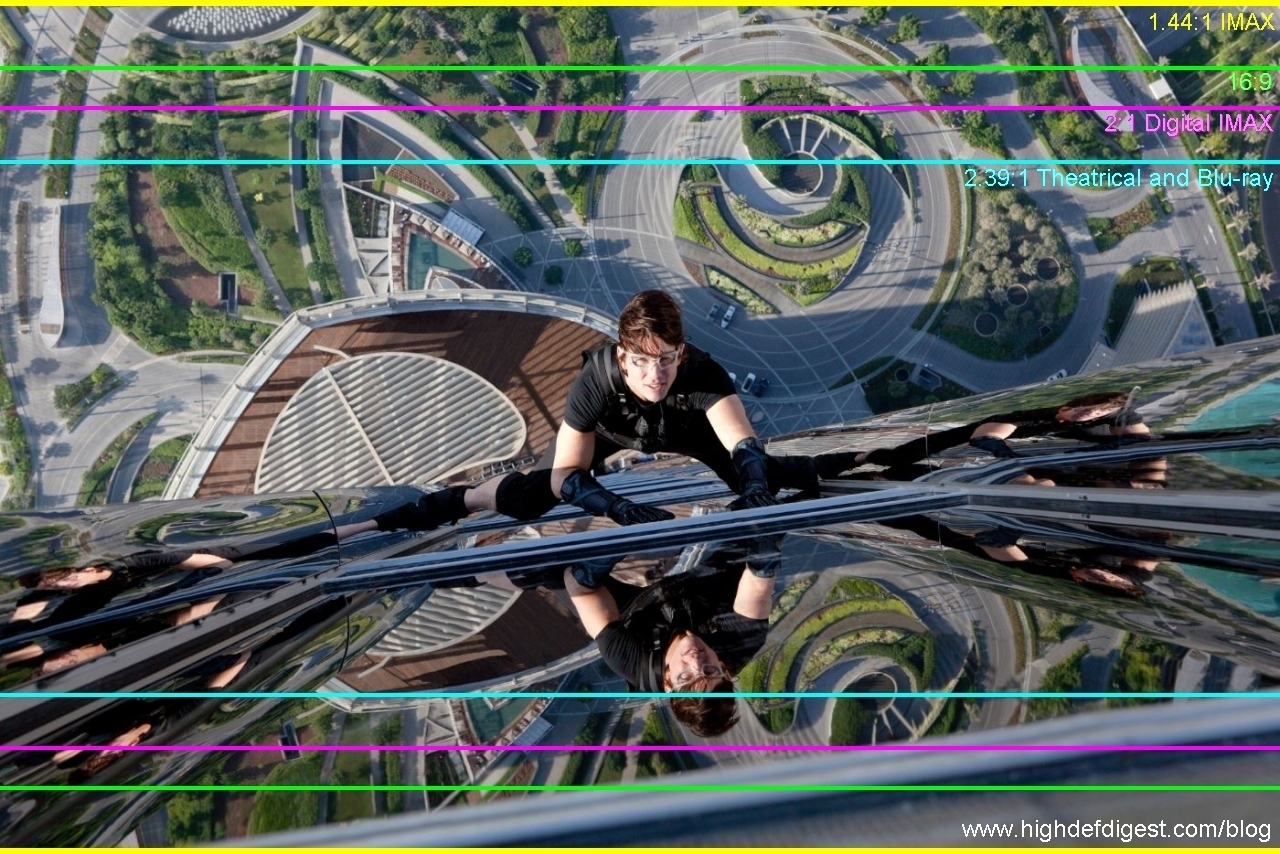The boundaries of the canvas that filmmakers use can take many forms. The Aspect Ratio of the frame size varies from The Kid’s 1.33 to Ben Hur’s 2.67 and everything between and beyond. There is the Academy Standard of 1.37, the HDTV standard of 1.78, Vistavision’s 1.85 and more. I would like to share a plethora of aspect ratios (with examples) so you, as a filmmaker, can decide which one will best serve your story.
At the bottom of this post…I’m including a FREE template package that covers just about every aspect ratio ever used. Feel free to use them on your own project or share it with other filmmakers, so they too can harness the power of the frame.
I decided to compile all these assets after seeing the wonderful and educational video posted by FilmmakerIQ that does an amazing job explaining the aspect ratio and its historical context. After watching it, I was reminded of a widescreen template package I downloaded years ago and but now can no longer find on-line. I’m more than happy to keep it alive and inject it back into the interwebz so that any current or future filmmaker will have access to all the geometric framings used over the years.
1.33 – THOMAS EDISON STANDARD (1909)
1.37 – ACADEMY RATIO (1932)
The following Aspect Ratios listed include the first film ever used in that format.
4.00 – POLYVISION (1927)
2.77 – CINERAMA (1952)
1.75 – METROSCOPE (1955) MGM
2.55 – CINEMASCOPE (1953) 20th Century Fox
2.35 – REGALSCOPE (1956) 20th Century Fox
2.35 – PANAVISON (1966) Panavision
2.39 – SHAWSCOPE (CINEMASCOPE)
2.00 – PANASCOPE (1961)
2.00 – SUPERSCOPE (1954) RKO
2.35 – SUPERSCOPE 235 (1956) RKO
2.35 – WARNERSCOPE (1958) Warner Brothers
1.85 – VISTAVISION (1954) Paramount
2.20 – TODD AO (1955) Michael Todd
2.20 – DIMENSION 150 (1966)
2.55 – CINEMASCOPE 55 (1956)
2.76 – MGM CAMERA 65 (1959) MGM
2.20 – SUPER PANAVISION 70 (1959) Panavision
2.75 – ULTRA PANAVISION 70 (1962) Panavision
2.35 – TECHNIRAMA (1956)
2.20 – SUPER TECHNIRAMA (1959)
2.35 – NIKKATSU SCOPE (1959)
1.43 – IMAX (1970)
2.39 – THEATRICAL and BLU RAY (current)
Broadcast TV / Cable TV / Video cameras have their own Aspect Ratio…
1.78 – HDTV (1983) developed by Kerns Powers for SMPTE
and finally a throwback to Panascope and Superscope from David Fincher…
2.00 – RED CAMERA (2013) cropped from 1.78
2.00 – UNIVISIUM (1998) Proposed by DP Vittorio Storaro as the aspect ratio he considered the new standard.
*UPDATE – THE HATEFUL EIGHT is the first film in ULTRA PANAVISION 70 since 1966.
*UPDATE – COMPILATION OF 70 DOCUMENTED FORMATS
UPDATE – 7:1 BARCO ESCAPE
I’m proud to actually make film history and update this post with 6 BELOW
I just finished editing the first full-length feature film in the 7:1 aspect ratio.
We shot in 6K and are delivering in the 6K BARCO ESCAPE format.
To test out over 70 FREE Aspect Ratios presets in any video or stills editing software…please use this LINK to download Film Dog Pro’s HD Letterbox Template Pack. It contains both 1920×1080 and 1280×720 sized PNGs and the 2 master Photoshop files used to create all the files. They were offered at www.ehartfordstudios.com but the site has been dead for some time. These are an incredible set of tools that allow all filmmakers to match the Aspect Ratios of almost any film ever made. Thank you Film Dog Pro wherever you are…
UPDATE: I have created by own VASHI VISUALS WIDESCREEN EXTREME preset package. It’s completely free and consists of PNGs that cover HD/2K/UHD/3K/4K/5K/6K. You can download it HERE.
UPDATE: Alex Gollner has a free plugin for Final Cut Pro named Alex4D Letterbox effect that allows you to apply dozens of aspect ratios. Enjoy!
BONUS UPDATE: Dynamic matte generator courtesy of Evan Schiff.
Lastly, If you would like to morph your footage from 16×9 into Anamorphic…
I created VashiMorphic40 a FREE After Effects project for filmmakers.
Thank you for taking the time to explore my blog and for reading this special post. It’s nice to find a lost nugget of goodness and be able to share it with you all…
Until next time…




































There are 55 comments
Awesome article. Thank you very much.
Greetings from germany
You’re welcome Josef! Thanks for the kind comment.
I get a kick out of this post. Thank you for sharing those fantastic Aspect Ratios.
Thanks Pablo! It was a lot of fun researching the information and getting all the assets.
Great history lesson! Totally didnt know House of Cards was shot 2:1 aspect ratio, Literally almost anamorphic but not. Leave it for Fincher to experiment
2.00:1 is a nice mix between 2.35 and 1.85 – I really like how it feels on screen. Thanks Jason!
Nice article. But no love for IMAX?
Good catch David. Will update with IMAX format.
Nice post. Thanks for the templates.
BTW, current widescreen is 2.39:1. (1920 x 804)
2.35:1 hasn’t been used since the 1970s, and even then it was matted in theatres to 2.39:1.
Digital Cinema Package 2k widescreen format is 2048 x 858 (2.39 aspect ratio)
Thanks for the current and latest specs Popcornflix! I tried to cover the original and legacy formats that got us up to today but left out the most updated numbers…poop. Maybe because almost everything is shot digitally then cropped with aesthetic intent to the desired widescreen specs. Thanks again!
Might be interesting to also mention movies like Dark Knight Rises which used multiple ascpect ratios throughout. It’s quite weird watching a movie as a filmmaker and noticing one change to the next!
That sounds like an idea for a future post! I added IMAX as a format to the master list…so I’m halfway there. Thanks for the comment Yash!
I’d like to add Life of Pie for consideration in the aspect ratio talk.
At one point Ange Lee uses 4:3 and I believe 2.75 during sequence in the film.
[…] The Ultimate Aspect Ratio Guide For Filmmakers […]
[…] Over at Vashi Visuals, you can check out every single aspect ratio ever used in film, from Thomas Edison Standard to Cinerama and beyond, all the way to the RED. In addition, there is a direct download link to free .PNG templates that you can use in your own productions. This is a great post, and Vashi has done everyone in the community a great service by digging deep showing us just how crazy the history of aspect ratios actually is. […]
[…] greatest. A big part of how your project is going to look depends on the aspect ratio you go with. Vashi Nedomansky has put together a impressive list of every aspect ratio throughout history that is worth a check […]
There is a great spanish master named José Val del Omar. It is vaguely know in the anglosaxon world. An inspiring figure and master investigator in the film format field. His innovations where not widely known. But for theoretical purposes where inmensely great advances.
http://www.museoreinasofia.es/coleccion/obra/historia-formatos
http://www.museoreinasofia.es/coleccion/obra/pruebas-formatos-bistandard-35-mm-e-intermediate-1635-mm
[…] https://vashivisuals.com/every-filmmaking-aspect-ratio-for-free/ […]
[…] disso, o Vashi Visuals desponibilizou em seu blog o Film Dog Pro’s HD Letterbox Template Pack, um pacote com 70 […]
[…] disso, o Vashi Visuals desponibilizou em seu blog o Film Dog Pro’s HD Letterbox Template Pack, um pacote com 70 […]
I love this!!
Don’t forget the new 9×16 camera phone aspect ratio! 😛
9 x 16 hurts my brain. When I see news footage from cell phones…my eyes bleed as my visual processing doesn’t comprehend. I literally turn my head sideways!
[…] The boundaries of the canvas that filmmakers use can take many forms. The Aspect Ratio of the frame … […]
Greetings from Portugal
Greetings Ricardo! Thanks for stopping by and I hope you found something fun or informative. Come back often!
[…] Rate this:Share this:MoreLike this:Like Loading… aspect ratiofilmmaking […]
Europe, widely used: 1.66, don’t forget.
Mirela
nice one! cheers from uruguay
[…] This probably really is the ultimate aspect ratio guide. […]
[…] 70 Free Aspect Ratio and Wide Screen templates for Filmmakers […]
The most complete list of aspect ratios that I’ve ever seen!
Thank you very much!
My sincere pleasure! Thanks for stopping by Alex.
[…] My feature film “The Grind” that I shot, edited and executive produced is still deep in post…but contains examples of all 3 of these techniques. Check out the video below to see these 3 tips in action. The color and sound is nowhere near finalized but the dramatic impact of the effects should give you a good idea of the possibilities. The first scene is a fistfight with a knockout punch. The second scene has the 3 lead actors in a car chase on Sunset Boulevard in Hollywood. They are tracking their target on an iPhone while at same time being tracked themselves…by a helicopter high above them. Finally, I chose a 2.00 aspect ratio that is also used in House of Cards. […]
If you are interrested in aspect ratios and want to learn more, visit the incredible http://www.widescreenmuseum.com/ website. On the web for decades, its full of technical information and rare documents. A must see.
Thanks for sharing! Amazing resource.
[…] is hard to replicate. This process is much more than just a wide aspect ratio..as demonstrated in The Ultimate Aspect Ratio Guide. VashiMorphic40 replicates the lens curvature of a 40mm Anamorphic […]
[…] editor Vashi Nedomansky has collected together a great catologue of the history of cinematic aspect ratios, starting with Thomas Edison and 1.33 and running all the way to 2.39 with theatrical and blu-ray […]
[…] Examples of every Aspect Ratio used in Film History and FREE templates for filmmakers. […]
[…] Examples of every Aspect Ratio used in Film History and FREE templates for filmmakers. […]
I recommend this site to people, so I don’t have to scribble various
rectangles onto napkins and bits of paper. I do still carry 65mm and 35mm
film clips in my shirt pocket, and a few posters.
Sam Longoria
Producer
Hollywood CA USA
Much appreciated Sam! Thanks for sharing and never stop carrying the film clip artifacts with you. They will be currency one day…
Thanks for this, however according to Wikipedia: “Scope, is still widely used by both filmmakers and projectionists, although today it generally refers to any 2.35:1, 2.39:1, or 2.40:1
From widescreen.org:
Cinemascope – 2.35:1 to 2.55:1
This was once the most commonly used method of filming movies because its only major requirement was a special CinemaScope projector lens. This lens was and still is available at many movie theatres. CinemaScope was originally created by 20th Century Fox, but it is no longer in use in its original format.
The 2.55:1 ratio was pretty much dead by 1957 when the last holdout, Fox, adopted magoptical over mag-only prints. From that point until the early 1970s a standard of 2.35:1 was used; however, there is usually slight matting in theatres which results in a theatrical aspect ratio closer to 2.40:1. All of the Star Wars movies and even the 1997 animated version of Anastasia were filmed in CinemaScope, as were classics like The Robe and 20,000 Leagues Under the Sea.
So, although it is likely correct to state THE ROBE IS 2.55:1, this does not tell the entire story of the aspect ratio that is CINEMASCOPE.
The 2:1 aspect ratio was proposed by Vittorio Storaro and is call Univisium.
http://en.wikipedia.org/wiki/Univisium
Thanks Tim. Good info and will update the database! Much appreciated.
Thank for sharing this info! could you help me by telling what’s this new Aspect Ratio im keep seeing more & Liking on following Popular Videos
Justin Bieber – As Long As You Love Me ft. Big Sean
http://www.youtube.com/watch?v=R4em3LKQCAQ
Sons Of Anarchy Season 6 – Brawl Teaser (HD)
http://www.youtube.com/watch?v=bihxKZswG2A
You are very welcome Sri! Looking at those videos it appears to be cropped in post to get that aspect ratio. Probably shot with Alexa or RED then cropped to a 3.50 or 4.00 aspect ratio. Hope that helps!
[…] article on Aspect Ratios via vashvisuals filmmaking aspect […]
Google…
Wonderful story, reckoned we could combine a few unrelated data, nonetheless actually worth taking a search, whoa did one learn about Mid East has got a lot more problerms as well….
The first digitally shot movie released in 2:1 is Lost Angels: Skid Row Is My Home, which was primarily shot with RED ONE cameras.
Thanks for sharing John. Will note it.
[…] Over at Vashi Visuals, you can check out every single aspect ratio ever used in film, from Thomas Edison Standard to Cinerama and beyond, all the way to the RED. In addition, there is a direct download link to free .PNG templates that you can use in your own productions. This is a great post, and Vashi has done everyone in the community a great service by digging deep showing us just how crazy the history of aspect ratios actually is. […]
Could you incestigate some claims I have heard that certain formats produced different colored lens flare. For instance Tohoscope produced a red flare, perhaps other formats produced other colors, it would be interesting to investigate how the color of the lens flare was produced.
Whats so special about IMAX? Nolan refered to it as the gold stanard if formats
Also what about Sovietscope and Technoscope?? Technoscope also know as 2 perf is quite popular today no?
Thanks for the insight and good questions Roland. I will look into it and update the post when I can.
wew, u got it 😉
[…] https://vashivisuals.com/every-filmmaking-aspect-ra… […]